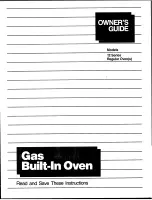
12
D39374 | Date 08/2018
Design and description
2.4
Materials used
Component
Materials
Housing
Stainless steel (W.St.Nr. 1.4016)
Piping
Stainless steel (W.St.Nr. 1.4571)
Interior
Stainless steel (W.St.Nr. 1.4404), which stands out
through its high stability, optimal hygienic proper-
ties and corrosion-resistance towards many (but not
all!) chemical compounds (caution for example with
chlorine compounds).
Thermoshelves
Aluminium. The vulcanised heating mat covered with
stainless steel on the underside of the thermoshelf is
made of silicone.
Plug connection of thermoshelf
and rear flange socket
Ryton R4 (GF-PPS plastic) or PEEK-GF30
Seals in solenoid valves and
flange sockets
Fluorocarbon FKM / FPM (Viton)
Door seal
Silicone
A resistance table for all these materials can be requested from the company MEMMERT.
2.5 Electrical
equipment
►
Operating voltage and current consumption: See nameplate
►
Protection class I, i.e. operating insulation with PE conductor in accordance with EN
61010
►
Protection class IP 20 acc. to EN 60529
►
Interference suppression acc. to EN 55011 class B
►
Appliance fuse: Safety fuse 250 V/15 A, quick-blow
►
The temperature sensor is equipped with a 100 mA miniature fuse.
2.6
Connections and interfaces
2.6.1
Electrical connection
This appliance is intended for operation on an electrical power system with a system
impedance Z
max
of a maximum of 0.292 ohm at the point of transfer (service line). The
operator must ensure that the appliance is operated only on an electrical power system
that meets these requirements. If necessary, you can ask your local energy supply com-
pany what the system impedance is.
Observe the country-specific regulations when making connections (e.g. in Germany DIN
VDE 0100 with earth leakage circuit breaker).













































